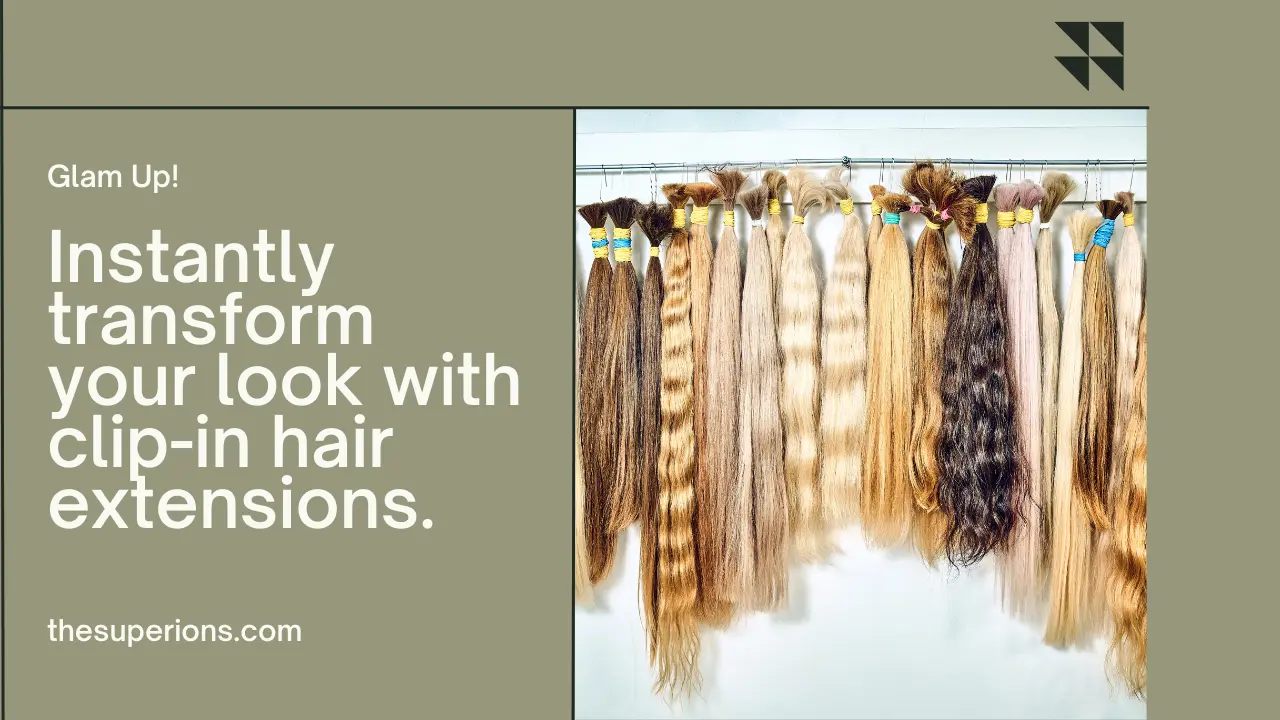Achieve Versatile Hairstyles with Clip-In Hair Extensions
Changing up one’s hairstyle is a rite of passage for many, often inspired by a desire for renewal or a fresh look. However, the excitement of a new haircut can quickly turn to regret, especially when the reality of short hair sets in. Fortunately, for those who miss their longer locks, there’s a simple and effective solution: natural clip-in hair extensions. These extensions allow individuals to effortlessly transition between short and long hairstyles, offering the versatility of both looks without any long-term commitment or damage to their natural hair.

Many people frequently alternate between short and long hair, showcasing the transformative power of natural clip-in hair extensions. Their ability to seamlessly blend extensions with short hair has made this approach a source of inspiration for many looking to achieve the same effect.
Choosing the Right Extensions
One of the critical steps in achieving a seamless blend between short and long hair is selecting the right set of extensions. Using sets of different colors to achieve a natural look can add volume and create a mixed effect that enhances the overall appearance. For those using a single set, opting for the heaviest set is recommended, as it provides the necessary volume to transition smoothly from shorter to longer pieces.
People Also Read?
Brushing your hair before clipping in the extensions is essential. This ensures that your hair is free of tangles, allowing the extensions to sit comfortably and securely.
Preparing Your Natural Hair
A crucial hack for blending hair extensions with short hair involves pinning the bottom section of your hair away. This technique helps to hide the shorter pieces at the nape of your neck, creating a more natural look. Start by sectioning your hair so that only a tiny portion is left at the bottom, then clip the rest away. Backcomb the remaining section, twist or braid it, and pin it flat against the nape of your neck with bobby pins. This provides a secure base for your first weft of extensions.
Mixing Colors for Added Dimension
Using multiple colors of extensions can significantly enhance the dimension and depth of your hair. This addresses common challenges like blending extensions with short hair and blending extensions with highlights or multi-toned hair. Alternating between different colors when clipping in the extensions creates a seamless blend that tricks the eye and adds natural-looking sun-kissed highlights. This approach is also a great alternative to spending time in the sun or undergoing a coloring process.
Securing the Extensions
To ensure that the extensions hold well, especially if you have finer hair, teasing the roots for added grip is a helpful technique. Backcombing the strands where you will clip in the extensions provides the necessary hold to keep the extensions in place throughout the day.
When clipping in extensions for short hair, the goal is to cover as much of the natural short hair as possible. This often means placing the extensions higher on your head than usual. Continue clipping in the extensions until you reach the top of your head, ensuring that each weft is securely in place.
Creating a Super Long Mega-Weft
A common challenge with short hair is ensuring that the shorter layers are adequately covered. One effective solution involves creating a super long mega-weft. Once you reach the widest part of your head, typically in line with your eyebrows, clip in two wefts side by side, allowing them to overlap slightly at the back. This creates one long, cohesive weft that covers all the shorter layers beneath, providing a smooth and natural transition from short to long hair.
Adding Face-Framing Pieces
To achieve a more natural blend, particularly at the front, adding face-framing pieces is crucial. Cutting wefts so that the sections towards the front of your face are shorter creates layers that blend seamlessly with shorter hair. Since extensions are made with 100% Remy human hair, they can be cut and styled just like natural hair. For the best results, it is recommended to take the extensions to a professional hairstylist for cutting and styling.
In addition to the face-framing pieces, place individual clip wefts wherever additional volume and length are needed. Placing a few behind the ears, starting with darker extensions and then adding lighter ones closer to the face, enhances the natural look of the extensions.
Finishing Touches with Waves and Curls
To further blend the extensions with natural hair, adding waves and curls can be highly effective. A time-saving tip is to curl the extensions beforehand. This allows for easy and quick curling, leaving only minimal touch-ups needed once the extensions are clipped in. Curl each shorter strand with a piece of the longer strands to blend the two seamlessly. A straightener can be used to curl any shorter ends inward. Finally, curl the top layer of your natural hair to achieve a smooth, cohesive look.
People Also Read?
By following these steps, anyone can transform their short hair into luscious, long locks effortlessly. This method showcases how clip-in extensions can provide versatility, allowing you to enjoy the best of both worlds—short and long hair—without any commitment. With the right techniques and a bit of practice, achieving a seamless blend with natural clip-in hair extensions becomes a simple and enjoyable process, letting you change up your look as often as you desire.





